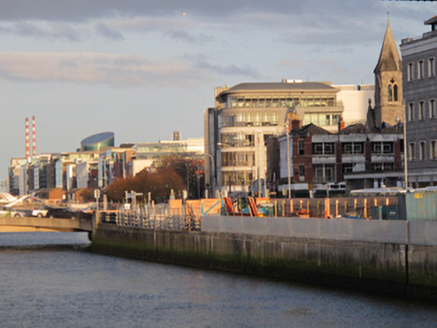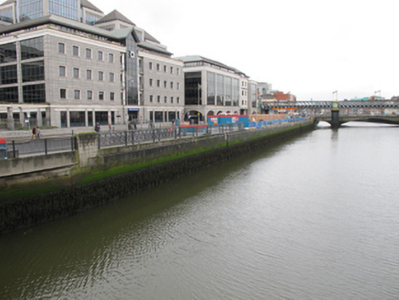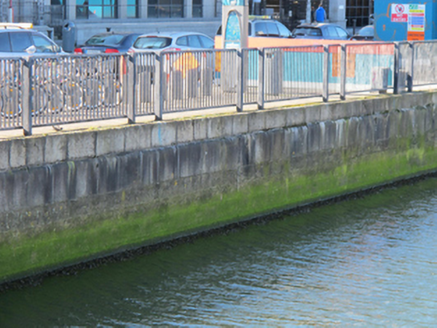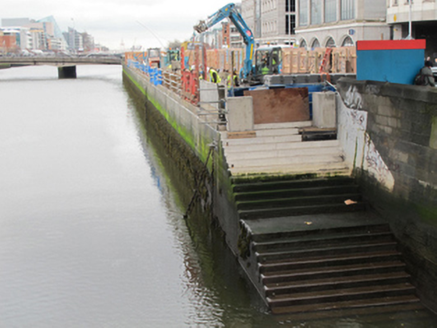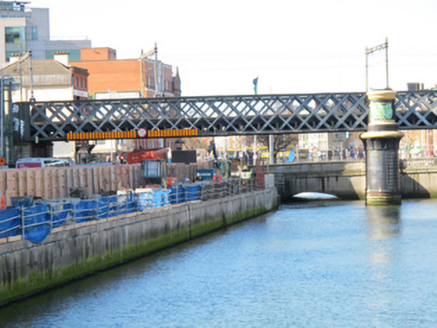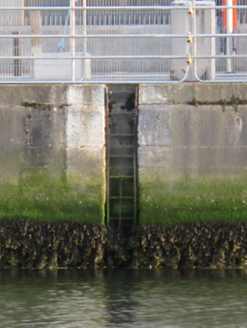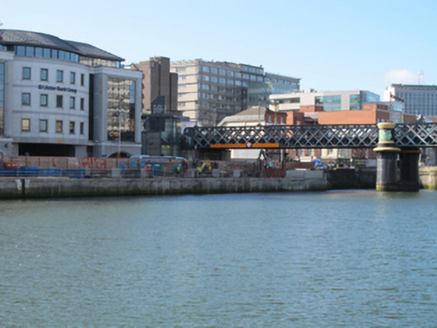Survey Data
Reg No
50020257
Rating
Regional
Categories of Special Interest
Architectural, Social, Technical
Original Use
Harbour/dock/port
In Use As
Harbour/dock/port
Date
1800 - 1820
Coordinates
316363, 234431
Date Recorded
04/03/2015
Date Updated
--/--/--
Description
Dressed ashlar granite quays, constructed c.1810, having concrete coping, recent steel rails, parapet wall with carved granite coping and masonry quay steps adjacent to Loopline Bridge. Cast-iron ladders rebated into quay walls.
Appraisal
The area south of the river and east of the city was slob land until the early eighteenth century, when dykes were built to reclaim land from the river. The granite quay walls were built by the Ballast Board as part of the continuous quay along the south side of the river at the beginning of the nineteenth century. These quay walls protected the reclaimed land behind from flooding, served as a landing stage for Dublin port, and, with the other quays, created a platform for a thoroughfare flanking the River Liffey through the heart of Dublin. The construction of the Loop Line Bridge, in 1891, prevented ships from passing further west than George’s Quay, and the construction of the Talbot Memorial Bridge in 1978 finally stopped ships docking here. This quay continues to serve a practical function in supporting the raised riverside, an important road into the redeveloped Grand Canal quarter, and is notable as a physical reminder of the civil engineering heritage of Dublin city. Its execution in ashlar granite attests to the high level of skill and artisanship employed in its construction. It forms a significant part of Dublin’s historic urban fabric.
